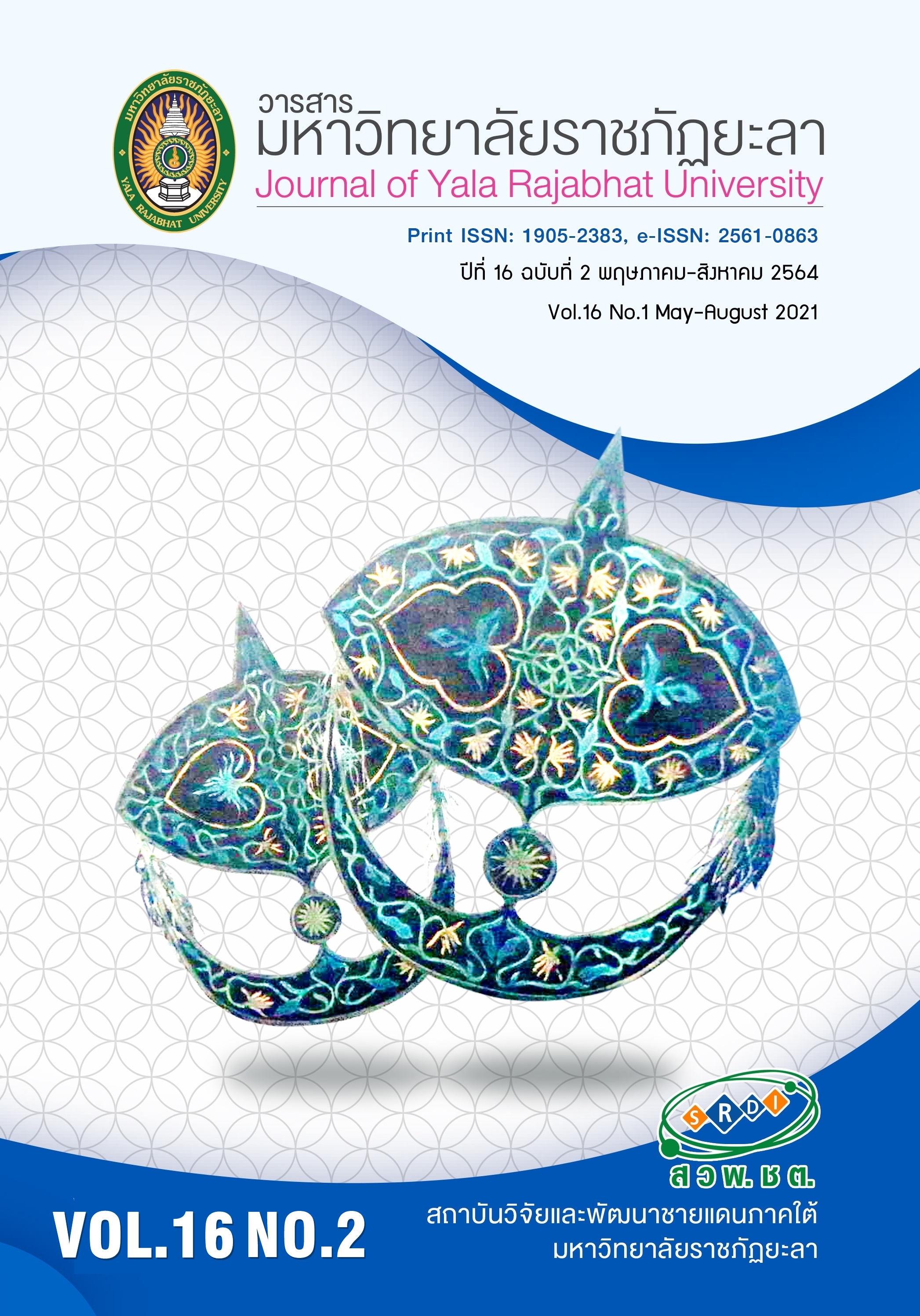ความสัมพันธ์ ความสัมพันธ์เชิงสาเหตุของปัจจัยทรัพยากรส่วนเผื่อทางการเงินและปัจจัยความเป็นผู้ประกอบการ ขององค์กรที่มีอิทธิพลต่อการเติบโตของธุรกิจขนาดกลางและขนาดย่อมในเขตกรุงเทพมหานคร
Main Article Content
บทคัดย่อ
การเพิ่มศักยภาพทางธุรกิจมีความจำเป็นสำหรับธุรกิจทุกขนาดโดยเฉพาะอย่างยิ่งสำหรับธุรกิจขนาดกลางและขนาดย่อมที่กำลังเติบโต ทรัพยากรทางการเงินเป็นปัจจัยสำคัญในการบริหารงานของผู้ประกอบการซึ่งในปัจจุบันการเข้าถึงทรัพยากรทางการเงินภายนอกองค์กรยากและซับซ้อนมากขึ้นจึงเป็นสาเหตุสำคัญที่ทำให้การเติบโตขององค์กรเป็นไปอย่างลำบาก การวิจัยครั้งนี้จึงมีวัตถุประสงค์เพื่อศึกษาความสัมพันธ์เชิงสาเหตุของปัจจัยทรัพยากรส่วนเผื่อทางการเงินและปัจจัยความเป็นผู้ประกอบการขององค์กรที่มีอิทธิพลต่อการเติบโตของธุรกิจขนาดกลางและขนาดย่อมในเขตกรุงเทพมหานคร เป็นวิจัยเชิงปริมาณ ใช้แบบสอบถามเก็บรวบรวมข้อมูลจากผู้ประกอบการ/ผู้บริหารของธุรกิจขนาดกลางและขนาดย่อม จากกลุ่มตัวอย่างจำนวน 384 คนซึ่งได้มาจากการใช้วิธีการสุ่มตัวอย่างแบบง่ายและนำมาวิเคราะห์ข้อมูลด้วยโมเดลสมการโครงสร้างด้วยโปรแกรม LISLEL 8.80 ผลการวิจัยพบว่าปัจจัยทรัพยากรส่วนเผื่อทางการเงินมีอิทธิพลเชิงบวกกับการเติบโตทางธุรกิจที่ระดับ 0.37 และปัจจัยความเป็นผู้ประกอบการขององค์กรมีอิทธิพลเชิงบวกกับการเติบโตทางธุรกิจที่ระดับ 0.41 แสดงให้เห็นว่าหากผู้ประกอบการ/ผู้บริหารขององค์กร มีการควบคุมค่าใช้จ่ายในการดำเนินงานจะส่งผลให้กิจการมีกำไรสุทธิเพิ่มซึ่งกิจการสามารถนำกำไรส่วนที่เพิ่มไปใช้เป็นเงินทุนสำหรับการริเริ่มกลยุทธ์ใหม่ หรือ แนวทางปฏิบัติงานใหม่ มาใช้ภายในกิจการเพื่อสร้างการเติบโตให้แก่องค์กรโดยเฉพาะการเติบโตในรูปของผลตอบแทนต่อยอดขาย ดังนั้น ทรัพยากรส่วนเผื่อทางการเงินจึงถือเป็นปัจจัยสำคัญที่จะสะท้อนออกมาให้เห็นในรูปของการใช้ทรัพยากรภายในองค์กรเพื่อให้เกิดผลตอบแทนในรูปของกำไรที่เพิ่มขึ้นเนื่องจากการควบคุมค่าใช้จ่าย
Article Details
บทความ ข้อมูล เนื้อหา รูปภาพ ฯลฯ ที่ได้รับการเผยแพร่ในวารสารมหาวิทยาลัยราชภัฏยะลานี้ ถือเป็นลิขสิทธิ์ของวารสารมหาวิทยาลัยราชภัฏยะลา หากบุคคลหรือหน่วยงานใดต้องการนำทั้งหมดหรือส่วนหนึ่งส่วนใดไปเผยแพร่ต่อหรือกระทำการใดๆ จะต้องได้รับอนุญาตเป็นลายลักษณ์อักษรจากวารสารมหาวิทยาลัยราชภัฏยะลาก่อนเท่านั้น
เอกสารอ้างอิง
Barney, J. B. (1991). Firm resources and sustained competitive advantage. Journal of Management, 17(1), 99-120.
Diamantopoulos, A. & Siguaw, J. A. (2000). Introduction to Lisrel: aguide for the uninitiated. London: Sage.
Karacaoglu, K., Bayrakdaroglu, A. & San, F. (2013). The impact of corporate entrepreneurship on firm’s financial performance: evidence from istanbul stock exchange firms. International Business Research, 6(1), 163-175.
Buranasri. K. (2010). The relationship between corporate entrepreneurship, business environment and
performance in medium and large size manufacturing corporation in the industrial estate authority of Thailand. Doctoral dissertation. Dhurakij Pundit University. (in Thai)
Krejcie, R. V. & Morgan, D.W. (1970). Determinging sample size for research activities. Educational and Psycholgical Measurement, 30(3), 607-610.
Kuratko, D. F., Hornsby, J. S. & Covin, J. G. (2014). Diagnosing a firm’s internal environment for corporate
entrepreneurship. Business Horizons, 57, 37-47.
Lee, S. (2012). Corporate governance, financial slack and firm performance: a comparative study between
US and UK, Seoul Journal of Business, 18(1), 1-22.
Mousa, F. & Chowdhury, J. (2014). The relationship between organizational slack and Innovation: revisited.
American Journal of Business, 29, 26-42.
Nafie, N., Tjambolang, T. A. & Pane, D. (2016). The effect of corporate entrepreneurship on firm performance (Case study on SMEs processing refined seaweed product in South Sulawesi, Indonesia). European Journal of Business and Management. 8(3), 108-114.
Office of Small and Medium Enterprises Promotion of Thailand. (2019). The fourth national SME promotion plan (2017-2021) [Online]. Retrieved April 15, 2020, from: http://sme.go.th/upload/mod_download/(2560-2564).pdf. (in Thai)
Peng, M. W., Li, Y., Xie, E. & Su, Z. (2010). CEO duality, organizational slack, and firm performance in China.
Journal of Corporate Finance, 17(2), 611–624.
Penrose, E., (1959). The theory of the growth of the firm, Wiley, New York, 84.
Rafailov, D., (2017). Financial slack and performance of bulgarian firms. Journal of Finance and Bank Management, 5(2), 1-13.
Srijunpetch, S., (2016). Managing SMEs with accounting. Journal of Accounting Profession, 12(36) 85-92. (in Thai)


